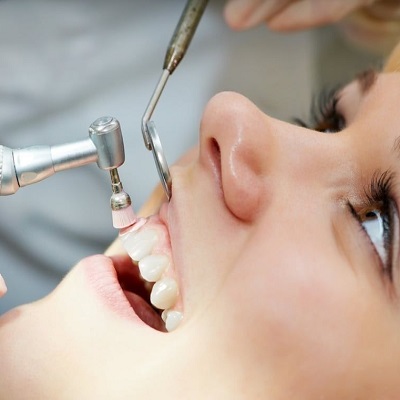General Dentistry encompasses a wide range of procedures aimed at maintaining and improving oral health. Whether you're dealing with a routine check-up or a more specific dental issue, understanding common dental procedures can help you feel more informed and comfortable. Here’s an overview of some frequently performed general dental procedures:
1. Dental Cleanings:
Purpose: Regular cleanings are essential for removing plaque and tartar buildup that can lead to cavities and gum disease.
Process: A dental hygienist uses special instruments to scale and polish your teeth. Fluoride may be applied to strengthen the enamel.
Frequency: Typically recommended every six months, but more frequent cleanings may be needed based on individual oral health.
2. Fillings:
Purpose: Fillings repair teeth damaged by decay or trauma, restoring their function and appearance.
Types:
- Composite Fillings: Tooth-colored and used for visible teeth.
- Amalgam Fillings: Silver-colored and durable, used for back teeth.
- Glass Ionomer Fillings: Release fluoride and are used in areas where aesthetics are less critical.
Process: The decayed portion of the tooth is removed, and the cavity is filled with the chosen material.
3. Root Canals:
Purpose: A root canal is performed to save a tooth with a severely infected or damaged pulp (the innermost part of the tooth).
Process: The dentist removes the infected pulp, cleans and shapes the root canals, and fills them with a rubber-like material. The tooth is then sealed and often restored with a crown.
Recovery: Most patients experience minimal discomfort and can resume normal activities quickly.
4. Crowns:
Purpose: Crowns cover and protect a damaged tooth, restoring its shape, size, and function.
Types:
- Porcelain Crowns: Mimic the appearance of natural teeth and are used for visible areas.
- Metal Crowns: More durable and used for back teeth.
- Porcelain-Fused-to-Metal Crowns: Combine strength and aesthetics.
Process: The tooth is prepared by removing a portion of its structure, and a crown is placed over it. A temporary crown may be used while the permanent one is being made.
5. Bridges:
Purpose: Bridges replace one or more missing teeth, using adjacent teeth as anchors for the replacement.
Types:
- Traditional Bridges: Consist of a false tooth anchored by crowns on adjacent teeth.
- Cantilever Bridges: Used when there is only one adjacent tooth to support the bridge.
- Maryland Bridges: Feature a false tooth attached to metal or porcelain wings bonded to the adjacent teeth.
Process: The anchoring teeth are prepared, impressions are taken, and a bridge is created and fitted.
6. Extractions:
Purpose: Tooth extraction may be necessary for severely damaged or infected teeth, or to make space for orthodontic treatment.
Types:
- Simple Extraction: Performed on teeth that are visible and easily accessible.
- Surgical Extraction: Used for teeth that are broken below the gumline or impacted, such as wisdom teeth.
Process: The tooth is removed under local anesthesia, and post-extraction care is provided to promote healing.
7. Dentures:
Purpose: Dentures replace missing teeth and are custom-made to fit your mouth.
Types:
- Full Dentures: Replace all teeth in the upper or lower jaw.
- Partial Dentures: Replace only a few missing teeth and are supported by surrounding natural teeth.
Process: Impressions of your mouth are taken, and dentures are created to fit comfortably. Adjustments are made to ensure proper fit and function.
8. Whitening Treatments:
Purpose: Teeth whitening procedures enhance the appearance of discolored or stained teeth.
Types:
- In-Office Whitening: Performed at the dentist’s office using stronger whitening agents.
- At-Home Whitening Kits: Provided by the dentist for use at home, typically with custom trays.
Process: Whitening agents are applied to the teeth, and the treatment may be completed in one or multiple sessions.
9. Sealants:
Purpose: Dental sealants are protective coatings applied to the chewing surfaces of back teeth to prevent cavities.
Process: The tooth surface is cleaned and dried, and the sealant is painted on and hardened with a special light.
Benefits: Sealants can last for several years and are especially useful for children and teenagers.
10. Periodontal Treatments:
Purpose: Treat gum disease and maintain gum health.
Types:
- Scaling and Root Planing: Deep cleaning procedure to remove plaque and tartar below the gumline.
- Gum Grafting: Replaces lost gum tissue to cover exposed tooth roots.
Process: Treatment varies based on the severity of gum disease and may include professional cleanings, medications, or surgical interventions.
FAQs:
1. How long does it take to recover from a root canal?
Most people recover from a root canal in a few days to a week. You may experience mild discomfort, which can be managed with over-the-counter pain relievers.
2. Are dental crowns and bridges covered by insurance?
Coverage varies depending on your dental insurance plan. Crowns and bridges are often covered partially, and it's best to check with your insurance provider for specific details.
3. How often should I get professional teeth whitening?
Professional whitening treatments can be done every 6-12 months, depending on your whitening goals and lifestyle factors that may affect staining.
4. What are the signs that I might need a tooth extraction?
Signs include severe tooth pain, signs of infection, and noticeable damage or decay. Your dentist will evaluate and recommend the best course of action.
5. Can I eat normally with dentures?
Yes, but it may take some time to adjust to eating with dentures. Start with soft foods and gradually introduce harder items as you become more comfortable.





Comments